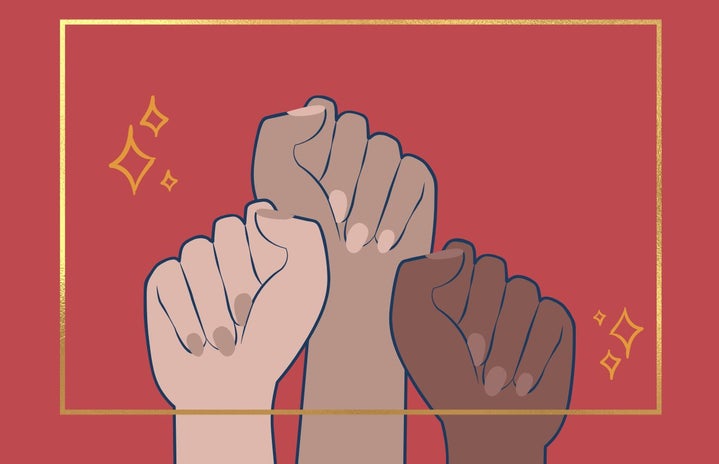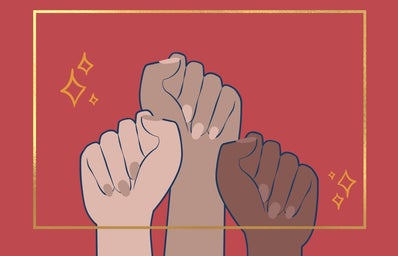I have been trying to write this article for a while now, but I haven’t known how to speak about the death of Mahsa Amini since it means so much to me. Almost two months after the incident, I can finally formulate and share my thoughts.
A 22-year-old Kurdish woman, named Mahsa Amini, died on Sept. 16 shortly after being arrested for wearing her hijab too loosely. Although Iranian authorities claim that Amini died of heart failure, her family and many protestors accuse the police of beating her to death. Mahsa Amini’s story has sparked international response. This article lists instagram accounts to follow in order to stay informed about what happening in Iran.
Laws regarding the hijab aren’t just found in Iran. India upheld their ban on hijabs in schools and France has policies to restrict wearing them as well. This isn’t about wearing the hijab anymore. It is about taking away a woman’s choice.
“It is not ironic that women in Iran are fighting for their right not to wear the hijab, while women in India are fighting for their right to wear one.
Both are fighting for the same thing: her right to choose.” – Namrata Zakaria
In Iran, wearing the hijab is mandatory, regardless of religion or nationality. This completely contradicts its purpose as part of the religion of Islam. Although the word hijab is now used to label the headscarf worn by many Muslim women, the original Arabic term simply means “cover” or “barrier.” Its primary intent is to provide modesty, privacy, and protection to a woman. In Islam, it is also a bridge between a woman and God. However, if she does not choose to wear it, then it does not benefit her. The hijab is more than just covering your hair and body. It is tied to an entire religion and behind each hijab is a story.
So, here is mine:
I started wearing the hijab in sixth grade. It was my choice to put it on, but that isn’t to say that I wasn’t pressured by my family. For the first couple of years when I wore a hijab, I didn’t have the best relationship with it. I was really attached to my hair. In elementary school, all the girls would braid each other’s hair, and mine was popular for its length and thickness. I used to think I looked prettier without the hijab, eager to take it off at the end of the day. There was also all the racism that I experienced, from weird looks to cruel words.
There is one incident specifically that remains in my memory.
My sixth grade classmate asked me, “Why are you wearing that?”
It was not a hurtful question, not objectively. But, I wasn’t expecting it. It took me by surprise, pulled the rug out from under my feet, so I lost my balance for just a second.
This classmate and I had known each other for two years now, and I did not think that my appearance would change her outlook of me.
My throat closed up because I didn’t know how to react.
I said, “It’s just part of my religion.”
Part of my religion? Was that all it was to me? My cousin of the same age as me was already wearing the hijab, so I put one on to impress my parents. Was that it?
I went home that day, and like all the rest, the first thing I did was take off my scarf. It wasn’t because it was uncomfortable or itchy but because I did not want to wear it. I would look at my hair in the mirror and smile.
This is me, I would think. I look better this way.
The hijab was suffocating me with pressure. It was more than just putting on a headscarf. It forced me to grow up, even though I was still heavily in my childhood. It required that I live up to wearing it by showing modesty in my appearance and personality.
Looking back, these were not negative impacts, but at the time, society’s expectations caused me to dislike my hijab. It ruined my self-worth, but I would find out later that another necessity of wearing the hijab is learning to love yourself, be confident, and not care about other people’s opinions—no matter how many ostracizing looks they give you. I love my hijab now. It is a part of me, and I wouldn’t take it off for anything.
Wearing the hijab takes an enormous amount of courage, and the women who still choose to are so admirable. Iran’s hijab law is disrespectful to all the women and girls who are struggling to wear the hijab. It invalidates the challenges that they must overcome in wanting to wear it by forcing all Iranian women to cover their hair, even if they don’t wish to. As a hijabi, it pains me to see the harm that something that is meant to protect women is bringing them. My heart goes out to Mahsa Amini and her family and to the other Iranian women fighting for their right to choose.


